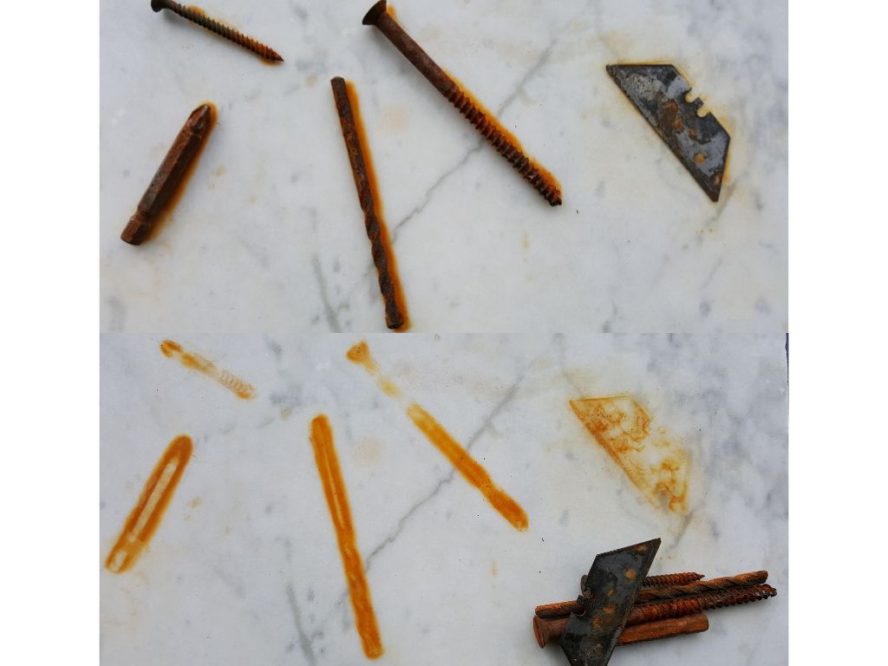Rust stains can be quickly and effectively removed from marble and limestone with the use of non-acidic chemicals. There are 2 products I use to remove rust stains from marble without damaging it. Both are easy to apply and are safe to use on polished marble. They are also safe to use on other types of natural stones like Limestone (Including Travertine), Sandstone, Onyx and Slate.
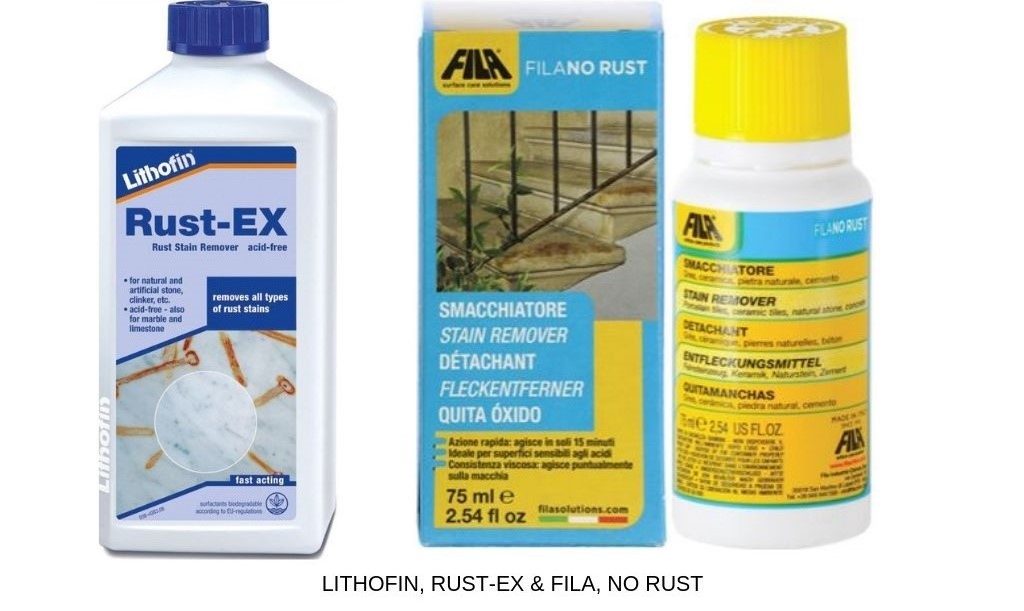
Both brands are well known in the Natural Stone industry and have a good record for producing excellent products.
RUST STAINS ON POLISHED MARBLE
Surface rust stains on marble can happen very quickly. You should always take great care not to leave metal objects on the stone. Especially in areas where moisture will get between the stone and the metal.
MORE INFORMATION
HOW TO CARE FOR AND CLEAN NATURAL STONE
Click below for more information on how to look after natural stone in different areas of your home or office.
REMOVING A RUST STAIN FROM POLISHED MARBLE
For this example, I have deliberately stained this old piece of Bianco Carrera marble. It only took about an hour to stain the marble, however, I wanted to make the stains difficult to remove.
The old rusty bits of metal were placed on this wet piece marble and left for about 3 days. As the water dried, I added more water. After removing the pieces of metal from the marble I left it in direct sunlight for about 3 weeks.
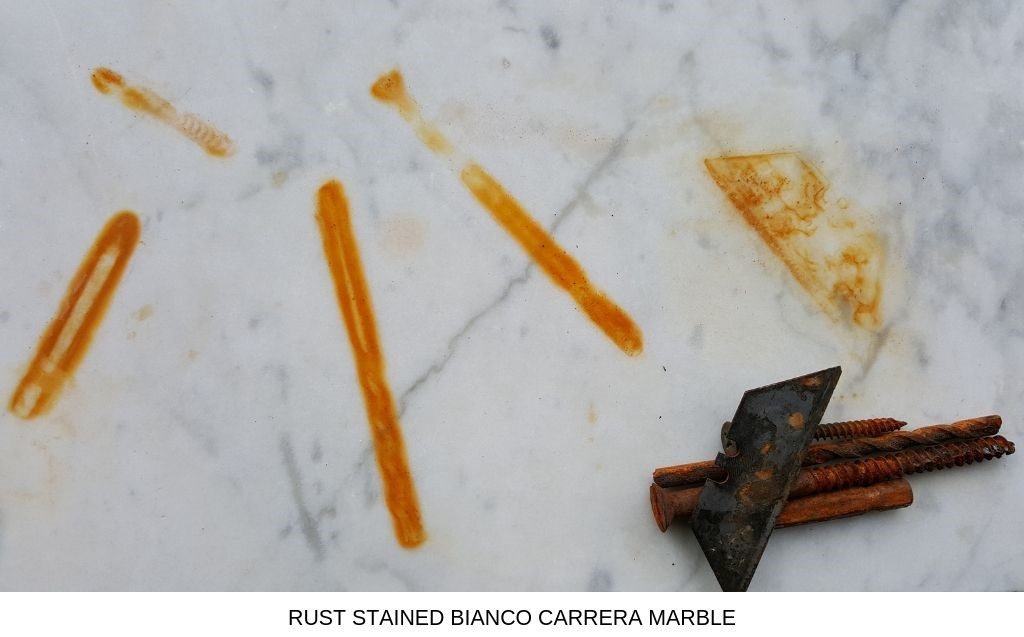
REMOVE METAL OBJECT(S) AND DRY THE STONE
Remove the metal object from the stone as soon as you notice the stain and dry the area immediately. Purchase you rust stain remover as soon as you can. The sooner you treat the marble the easier and quicker it will be to remove the stain.
Read the instructions that come with the products, and in an inconspicuous area do a small test for peace of mind. Both products come with easy to follow instructions. Lithofin Rust-Ex the instructions are written on the bottle, Fila No-Rust’s instructions are on a separate sheet in the box.
Both companies say you can pour the product onto the affected area and leave it to react. I prefer a more controlled method which will make cleaning up a lot easier at the end. In this example, I used Fila: No Rust Stain Remover.
YOU WILL NEED THE FOLLOWING ITEMS
Pour a small amount of the rust stain remover into the cap. The liquid is a little thick so give the bottle a gentle squeeze.
For small spots of rust stains dip the brush into the chemical and allow it to drip onto the spot. Apply enough product to completely cover the rust stain.
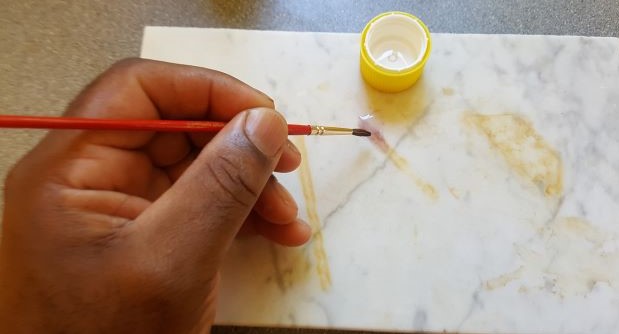
Do not worry about the purple colour, this will wash off
BLOTTING THE STAIN
Once the product has reacted with the stain remove it by blotting the area with a paper towel. If the stain is still visible repeat the process but leave the chemical on the spot for a little longer. Never leave it for more than ten minutes on the marble before removing the chemical.
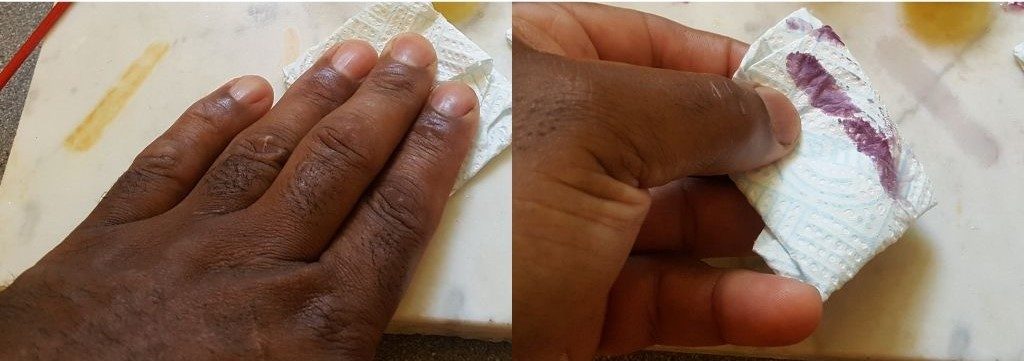
If you are removing a rust stain from white marbles like Thassos or Carrera. Once the product has reacted with the rust stain, this can be after just a minute or two, remove it. For darker marbles, you can leave the product on the stone for about five minutes.
LARGER AREAS
If the stain is a larger area, fold a piece of paper towel into the size of the stain. Soak the piece of paper towel in the chemical and place it onto the stain and leave it for a few minutes. You will see the paper towel turning purple as the chemical reacts with the rust stain. Remove the paper and dry the area, if the stain is still there repeat the process until the stain has gone.
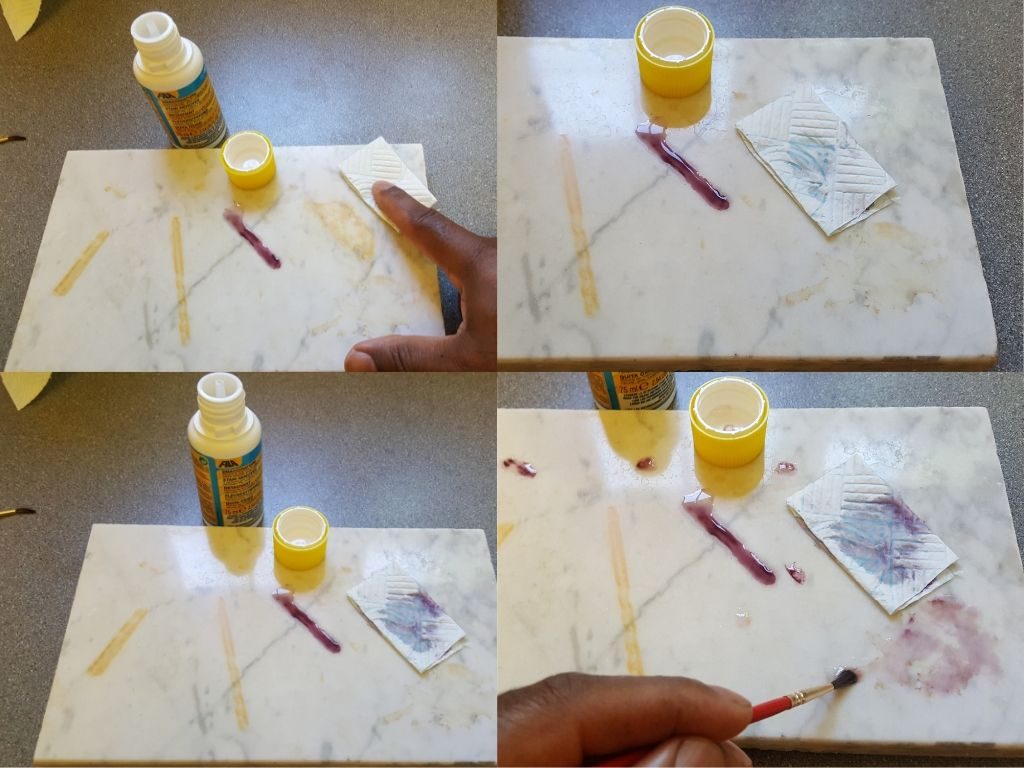
WASH THE AREA WITH CLEAN WATER
Once you have completely removed the stain, there will be a purple residue. Wash the area down with clean water until the purple colour is no longer visible. This can sometimes take several attempts, depending on how long the stain has been there.
Where the stain(s) were difficult to remove, and I repeated the process 3 or 4 times. I have found, it is good to wash the area with clean water after every 2 applications. The longer you use the product for the more effort it will take to remove the purple residue. On the white marbles, I washed it after each application.
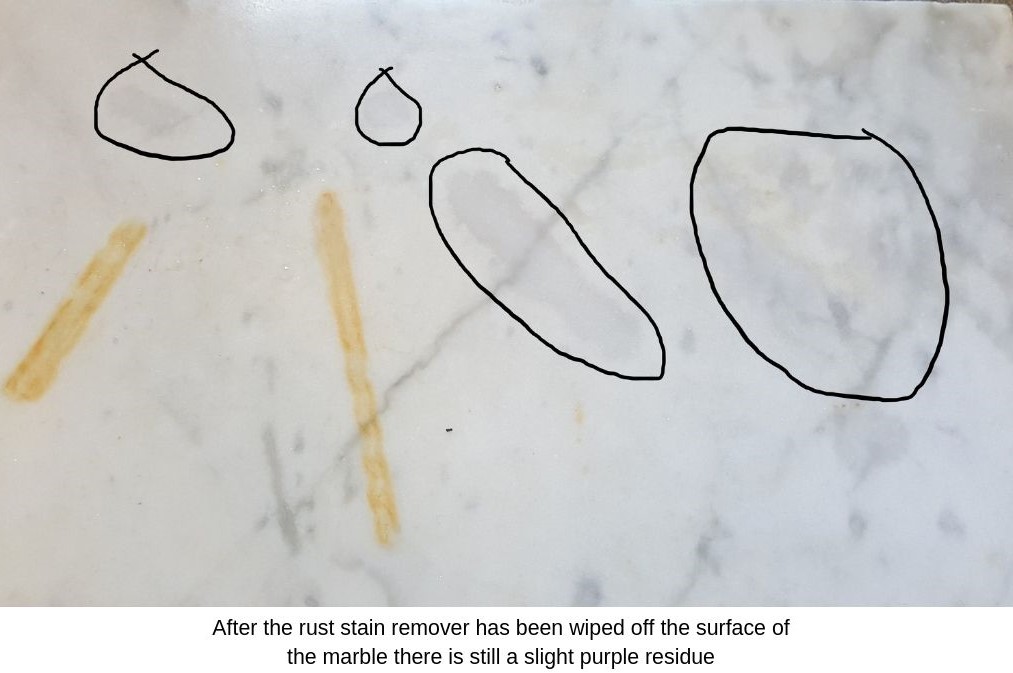
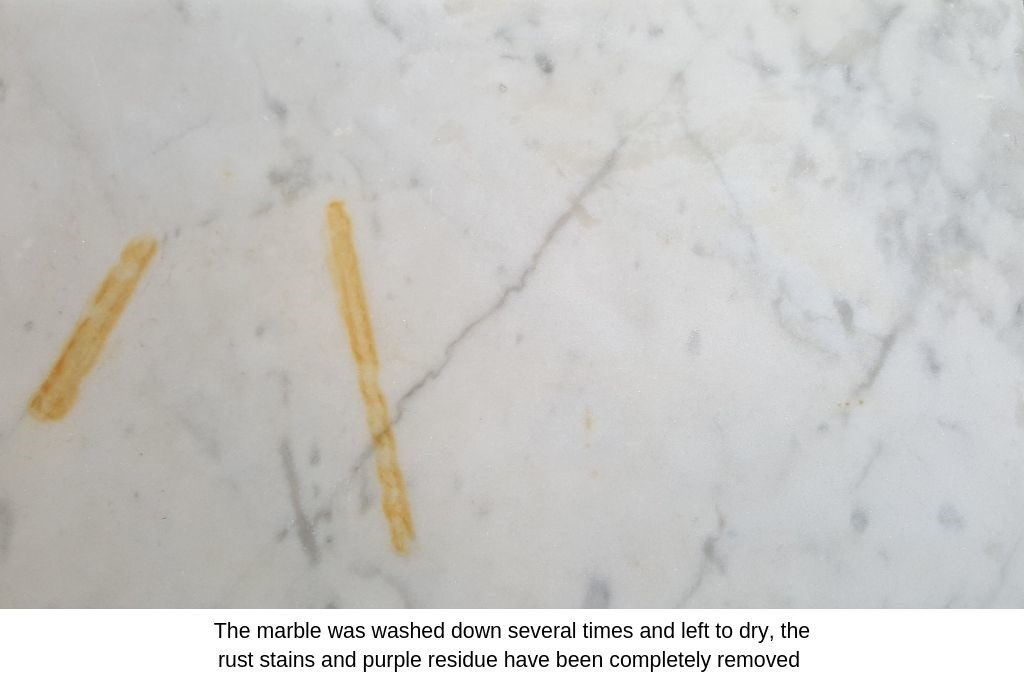
THE PURPLE RESIDUE
The amount of purple residue on the marble also depends on how much rust remover you have used. That is why I prefer a more controlled method for applying the chemical. However, I have never had an occasion when the purple colour residue has not been completely removed.
USING LITHOFIN RUST-EX
Here are two examples (interior & exterior) where I used Lithofin Rust-EX to great effect.
INDIAN SANDSTONE PATIO
The first is a patio area paved in Indian S
Over the length of the tenancy, the furniture had reacted with the sandstone. After periods of wet weather and jet washing the patio, followed by periods of warm sunny weather. Approximately 60 to 80 rust stains of various sizes and shapes had formed on the surface of the sandstone.
CLEAN THE AREA FIRST
The patio was jet washed to remove all the moss, algae and dirt etc from the surface of the stone. Once the patio was dry all the rust stains were visible. The rust stains were spread over an area of about 8 square metres (or approximately 85 square feet).
It was not cost-effective to pour the rust stain remover over the entire area. Also, s
COTTON BUDS AND PAPER TOWELS
I used cotton buds and soaked them in Rust-EX and placed them directly onto the small spots. For the larger spots, I rolled up pieces of paper towel into a ball before soaking it in the product.
Where there was a concentration of rust marks/stains I poured the rust remover directly onto the stone.
THE PHOTOS BELOW SHOW THE PROCESS OF REMOVING THE RUST STAINS FROM START TO FINISH
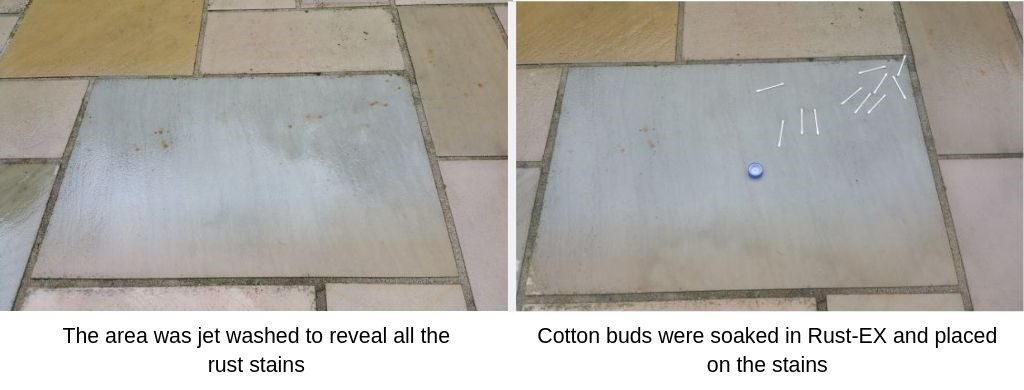
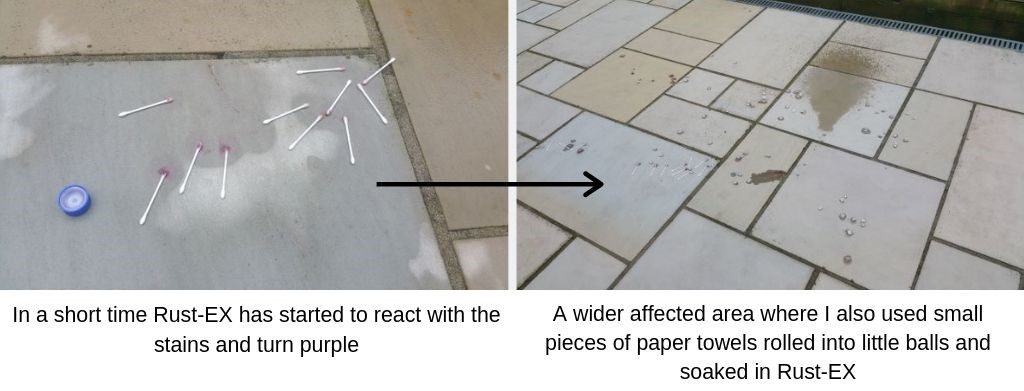
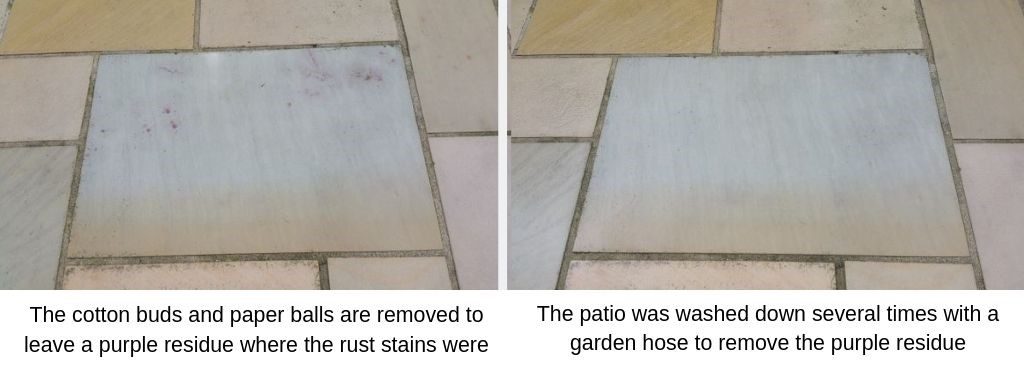
LIMESTONE CHANGING ROOM FLOOR
The second example is a limestone floor in the changing rooms of a spa area. The radiators in the changing rooms had to be changed. While completing the works a few drops of water from the old radiators settled on the limestone and stained it.
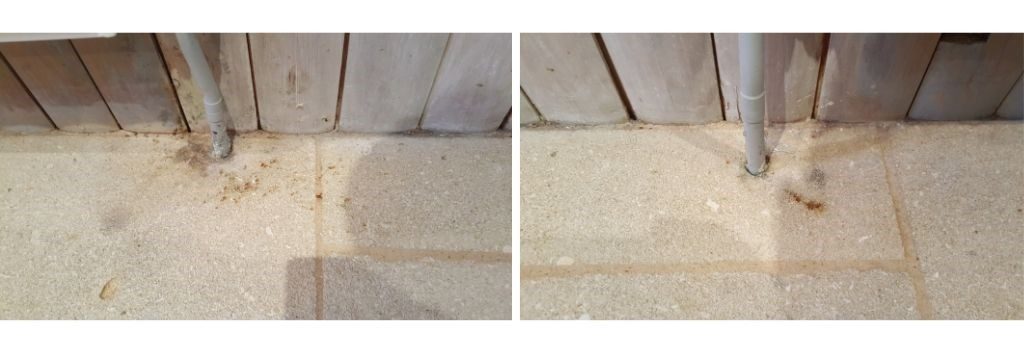
At the time of my attending the site, the stains had been there for about 3 weeks. The rust stains looked very dark because the water was from some old iron radiators that were being replaced. The plumbers and cleaning staff tried to remove them, but the reaction was very quick.
QUICK REACTION
I applied Lithofin Rust-EX with a small artists brush, in less than a minute the chemical had reacted with the stains. I left the chemical on the stains for about 5 minutes. Lithofin recommends a maximum of 10 minutes before the chemical should be removed. The area was then blotted with a paper towel before being rinsed off with some clean cold water.
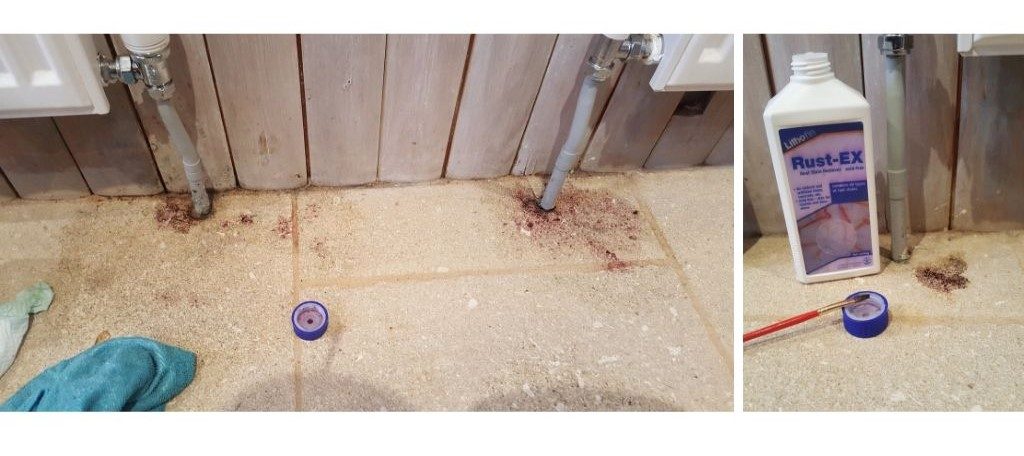
REMOVING THE STUBBORN RUST STAINS
To remove the very stubborn stains, the area was left to dry for a short time. I then applied more of the product than I had previously. This time I let the chemical settle for longer to work on the rust stains, about 8 or 9 minutes. I found that with each application the purple colour on reaction is lighter, a good indication the stains are being removed.
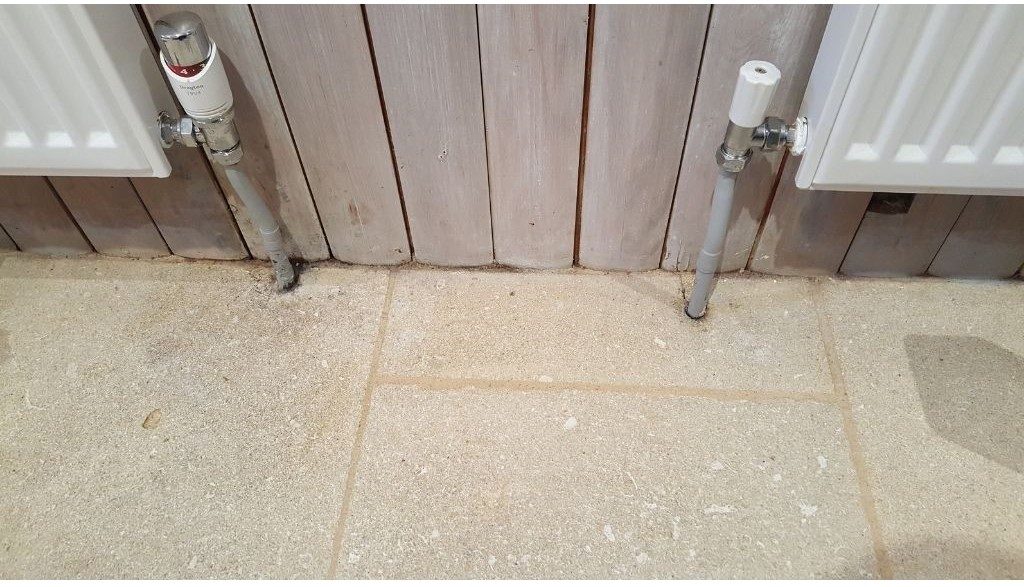
After several washes to remove the purple residue, the stone was left to dry. The limestone floor is now free of rust stains and restored to its original condition.
